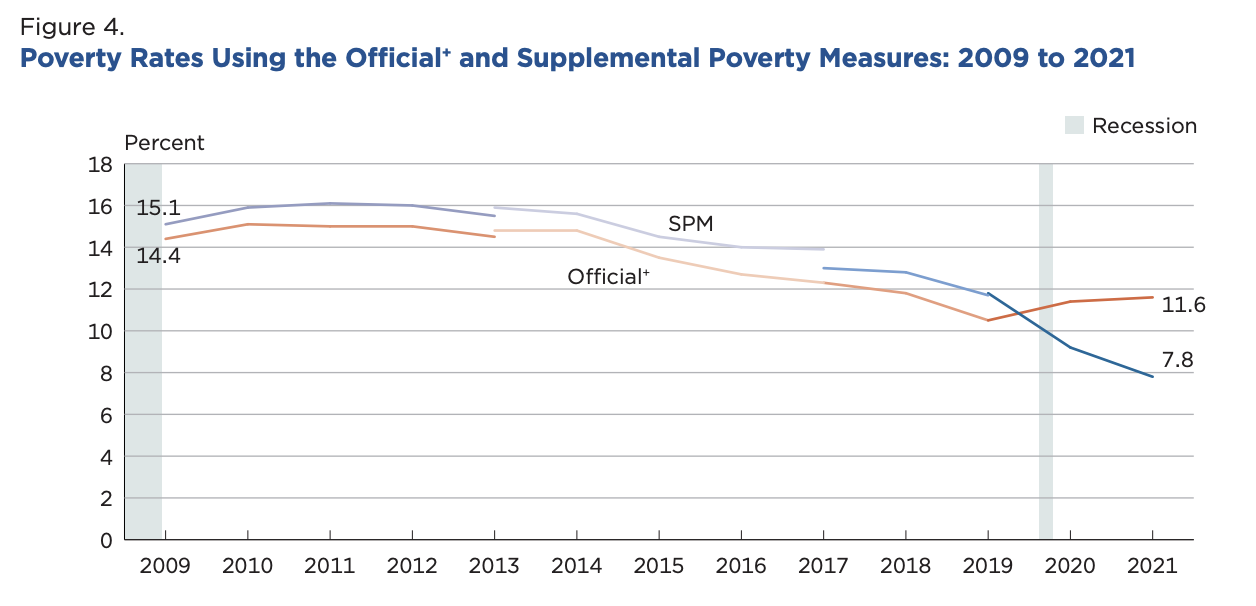
Each year, the US Census Bureau reports the Supplemental Poverty Measure (SPM) from the prior calendar year. Unlike the Official Poverty Measure, the SPM considers taxes, in-kind benefits, and local housing costs.
In 2021, the latest year available, the SPM poverty rate hit its all-time low at 7.8%.

This question will resolve to the value the Census Bureau reports for 2023, likely in September 2024.
I've set the initial value to 7.8%, the 2021 value. I've set the range from 0% to 15%, which SPM hasn't exceeded since 2014.
See also the market Will the US Supplemental Poverty Measure be higher in 2022 than 2021?
🏅 Top traders
| # | Name | Total profit |
|---|---|---|
| 1 | Ṁ34 | |
| 2 | Ṁ18 | |
| 3 | Ṁ3 |
People are also trading
My prediction: 8.7%.
PolicyEngine (my nonprofit) estimates that the poverty rate would be 8.0%, applying 2022 policy rules to 2021 survey data.
The most important policy change I expect is for SNAP emergency allotments to end. PolicyEngine estimates that repealing SNAP emergency allotments for all of 2023 would raise the poverty rate from 8.0% to 10.2%. I expect that states will end these when the federal public health emergency ends, which will occur no sooner than mid January, and with 60 days notice from HHS Secretary Becerra. I predict it will end in February, so we'll get about 1/10 of the poverty gains from emergency allotments. That brings it to 9.8%.
From 2009 to 2019, SPM poverty fell an average of 0.3 percentage points per year. If that continues, it would bring it down further to 9.2%.
That natural decline reflects both economic improvement and attention to antipoverty policies like refundable tax credits. However, the Child Tax Credit expansion suggests to me that policy reforms will receive more attention by 2023, especially if Democrats retain control of Congress. States are also introducing and expanding tax credits, which will further reduce poverty. I predict these additional changes will lower poverty by another 0.5 percentage points to 8.7%.
